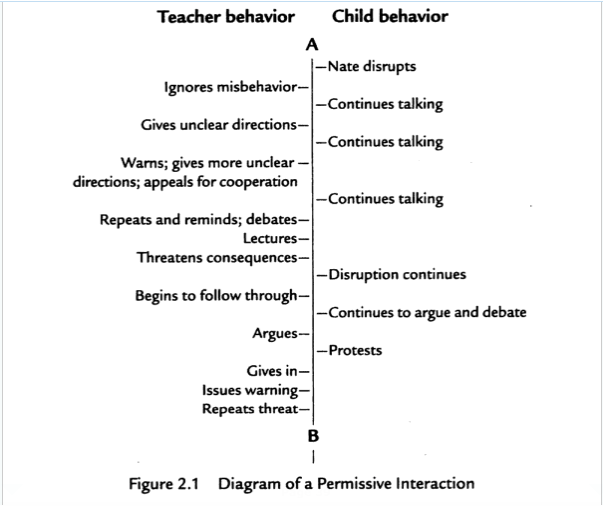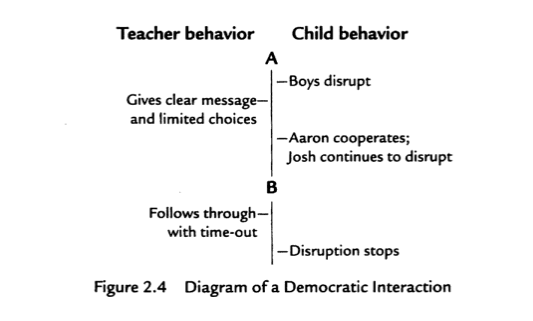The Dance of Discipline
5 Min Read • Procedures
Are you in need of cutting down discipline issues in the classroom, or in need of management ideas for project-based learning? Maybe a bit of both? Read on to gain strategies on troubleshooting common behavioral problems in the classroom, as well as ideas for managing flexible learning.
Behavior Management for Common Problems: The Dance of Discipline
When I started out as a teacher, I was well equipped to design high-quality lessons. I was excited to share my passion for my curriculum with the young, bright-eyed students who would be eagerly ready to learn. I quickly learned that well-crafted lessons and interesting topics were not enough to keep attention seeking behaviors at bay. My seasoned colleagues gave me advice like, “Don’t smile until Christmas,” and suggested that I was too nice. But I knew that being “mean” wouldn’t garner the respect that I was looking for, as I firmly believed that the only way to gain that respect was to give my students respect.
After that first year of teaching, I found the book “Setting Limits In The Classroom: Moving Past the Dance of Discipline” by Robert J. MacKenzie, Ed.D. It helped me to analyze the problem behaviors and discipline issues that occurred in my classroom in a simple way that I hadn’t done before. This book shows the “dance” as the interactions of teachers and students and identifies how teachers can properly respond in a way that cuts off a disruption, rather than unknowingly prolonging it. By using a T-chart diagram as the book did, I could plug in a common problem scenario from my classroom, and I was able to practice my responses. This helped me identify my mistakes and taught me how to end discipline issues effectively and respectfully.
In the book, Dr. MacKenzie groups problem behaviors into many categories. Here is an example of the T Chart used to diagram what he calls Permissive Interactions.
Example:

An example of how to analyze disruptive behavior and teacher response, from Setting Limits in the Classroom by Robert J. MacKenzie, ED.D. (https://www.amazon.com/Setting-Limits-Classroom-Revised-Discipline/dp/0761516751)
After diagramming and explaining other problem scenarios, he shares solutions for cutting the interactions short. Here is an example of his “Democratic Interaction”:

An example of how to analyze disruptive behavior and teacher response, from Setting Limits in the Classroom by Robert J. MacKenzie, ED.D. (https://www.amazon.com/Setting-Limits-Classroom-Revised-Discipline/dp/0761516751)
I’m confident that many educators will identify with at least one of the scenarios explained in the book. This makes it an easy and user-friendly read for busy teachers. After reading to gain the overview, teachers can skim the scenarios until they find one that they recognize. Then they can closely read to find the solution of how to cut down on the “back and forth” banter that prolongs and encourages the behavior. This book is a great start for beginning teachers who want to be firm, but aren’t sure how to do it without being “mean”.
Setting High Expectations and Holding Students Accountable
Great classrooms have lots of opportunity for partner/small group work, independent choices, and flexibility. This can be a challenge for even the most seasoned teacher to manage. This type of learning can be difficult to manage and escalate various discipline issues. Not only are there multiple things going on at once in the classroom, but it is impossible to be everywhere at once to monitor individual behaviors. In addition, if we spend all of our time correcting behaviors, we are not free to confer with students to help them extend their learning.
I find that teaching students how to hold themselves accountable helps with this. To do this, try the following steps:
- Explicitly teach the desired behaviors, even if you feel they are assumed. Meet as a group. Explain what you are looking for. Have students generate the guidelines they should follow in order to be successful. (Ask students what it looks like/sounds like/feels like to do their best learning in these situations.) Post these guidelines.
- Test it out. Design an activity (icebreakers work well for this!) for students that allows them to work in partner, small group, or free choice stations. As students are working, take candid pictures and/or video clips. After the activity, gather the students together to debrief. Ask them to reflect on the guidelines and how well they were able to follow them, and modify if needed. Show the video clips and pictures, and ask students to politely comment on how the students in the picture are doing in regards to the guidelines you’ve set. What can be observed from the body language you see? What looks good? What could be improved? Set a culture that allows students to critique each other to help each other improve, making sure comments are not subjective and unkind, but simply observational.
- Provide a self-checklist for students to hold themselves accountable. Use the guidelines that were created to create a little checklist. After group or independent work, have students reflect on their work time using the checklist. The expectations will be ingrained in students after a few times of working through this list and students will begin to self-monitor as they are working so that they can successfully complete their checklist. Here’s an example of a checklist I use for book study groups. I copy them four to a page so they are small, and I keep a stack of them within reach of students so I don’t have to prepare them every time we do partner work. The “explain” column is optional for students.
Setting these procedures and expectations at the beginning of the year will help create deeper learning in your classroom. You won’t need to focus on behavior as much, which allows you the opportunity to really focus on meaningful, instead of distracted, conversations with students as you facilitate activities. Once you set guidelines for one type of learning activity, discipline issues will lessen and learning expectations will cross over to other types of learning activities. Your emphasis on behavior can turn in to maintenance, instead of behavioral expectations as your main focus point. As an end goal, students will flourish as your routines and expectations fall into place!




